24 Hours Hotline: +8613735411378
Email:chengdu@tripstoshanghai.com
24 Hours Hotline: +8613735411378
Email:chengdu@tripstoshanghai.com
Chengdu, a vibrant hub of culture and commerce, is served by two world-class airports: Chengdu Shuangliu International Airport (CTU) and Chengdu Tianfu International Airport (TFU). Together, they form China’s leading dual-airport system, connecting Chengdu Airport China to over 300 domestic and international destinations. Whether you’re arriving at the convenient downtown-proximate CTU or the modern, transit-focused TFU, this guide covers everything you need for a smooth journey through Airport Chengdu China.
Your Ultimate Chengdu Adventure: Handcrafted Itineraries for Every Explorer!
Immerse yourself in Chengdu’s allure!
Delve into the vibrant streets of Chengdu, where rich history meets modern charm. Whether you're visiting the famous panda sanctuaries, marveling at the ancient temples, or savoring mouthwatering Sichuan dishes, our thoughtfully designed tours ensure you get a taste of everything. Whether you're a cultural explorer, an adventure seeker, or a foodie, there's something special waiting for you in Chengdu.
Airport Overview: CTU vs. TFU
A. Chengdu Shuangliu International Airport (CTU)
1. Location: 16 km southwest of Chengdu’s downtown core, nestled in Shuangliu District—one of the city’s most developed areas with dense transportation links.
2. History: Established in 1938 as a military airfield, it transitioned to civil aviation in the 1950s and evolved into a national hub by the 1980s. Key milestones include the opening of Terminal 1 (1997), Terminal 2 (2012), and a runway expansion (2019) to boost capacity.
3. Scale: Covers 14.8 square kilometers, with 2 terminals (T1/T2) and 2 runways. It handled over 53 million passengers in 2019 (pre-pandemic peak) and maintains 300,000+ annual flight movements.
4. Infrastructure: Compact layout with terminals connected by walkways and free shuttles, minimizing transit time between gates.
5. Strategic Positioning
· Domestic Hub Focus: CTU is Chengdu’s “city-centric gateway,” prioritizing high-frequency domestic routes and regional connections. It dominates short-haul and medium-haul flights to Chinese cities, with unrivaled convenience for travelers heading to downtown Chengdu or nearby attractions (e.g., Panda Base, Jinli Ancient Street).
· Business & Leisure Enabler: Catering to day-trippers, short-stay visitors, and domestic business travelers, its proximity to the city (30 mins by car/metro) reduces ground transit time—critical for time-sensitive trips.
· Regional Connectivity: Serves as a hub for Sichuan Airlines’ “Rong-Hang Express” (high-frequency routes between Chengdu and key domestic cities like Beijing, Shanghai, and Guangzhou) and connects to smaller cities in Sichuan, Yunnan, and Guizhou provinces.
6. Website: https://www.cdairport.com/
B. Chengdu Tianfu International Airport (TFU)
1. Location: 50 km southeast of downtown, in Jianyang City (part of Chengdu’s Tianfu New Area)—a rapidly developing tech and logistics hub.
2. History: Constructed to elevate Chengdu’s global aviation status, it opened in June 2021 as China’s first “four-star” green airport. Phase 1 includes 2 terminals (T1/T2), 3 runways, and a Ground Transportation Center (GTC) integrating metro, high-speed rail, and buses.
3. Scale: Spans 71.9 square kilometers (nearly 5x larger than CTU), with a designed capacity of 60 million passengers/year (expandable to 120 million in future phases). It handled 38 million passengers in 2023, marking rapid growth as an international hub.
4. Infrastructure: State-of-the-art facilities, including an APM shuttle linking T1/T2, smart security checkpoints, and eco-friendly designs (e.g., solar power, rainwater recycling).
5. Strategic Positioning
· Global Gateway: TFU is Chengdu’s “international flagship,” focusing on long-haul international routes and intercontinental connectivity. It’s designed to meet the demand for global travel, with direct flights to 16+ international hubs (London, Paris, Tokyo, Singapore) and growing links to Europe, North America, and Oceania.
· Transit & Long-Haul Hub: Optimized for international-domestic transfers, it offers 24-hour transit inspection exemption, through-check baggage services, and dedicated transfer lanes—positioning Chengdu as a key transit hub in Asia.
· Future-Oriented Development: Aligned with Chengdu’s ambition to be a global city, TFU supports the Tianfu New Area’s tech, trade, and logistics industries. It also caters to long-haul travelers and those visiting distant attractions (e.g., Leshan Giant Buddha, Jiuzhaigou) via its high-speed rail links.
6. Website: https://www.sctfia.com/flight/flight.html
CTU and TFU operate as a synergistic pair rather than competitors: CTU leverages its urban proximity to cater to quick domestic trips and regional travel, while TFU expands Chengdu’s global reach with modern infrastructure tailored for international and long-haul flights, and together, they establish Chengdu as one of China’s only cities with a dual-airport system capable of handling over 100 million annual passengers, solidifying its role as a key aviation hub in Southwest China and beyond.
Terminal & Facilities: Comfort for Every Traveler
A. Chengdu Shuangliu International Airport (CTU): Compact Convenience with Local Charm
CTU’s two terminals (T1 and T2) boast an intuitive, traveler-friendly layout—connected by covered walkways and free shuttle buses (running every 10 minutes) that eliminate long transit times between gates. Signage is bilingual (Chinese/English) and prominently placed, with digital screens displaying real-time flight updates and facility maps, ensuring even first-time visitors can navigate with ease. The terminals’ compact design means most gates are within a 5–10 minute walk from check-in or security, a major win for time-sensitive travelers.
1. Rest & Relaxation
· Seating Zones: Beyond standard waiting chairs, CTU offers dedicated “quiet rest areas” in T2’s midfield concourse, with padded armchairs, power outlets, and dimmable lighting for napping.
· Lounges: Sichuan Airlines’ “Panda Lounge” (T2) and Air China’s domestic lounge cater to premium passengers, with complimentary snacks, beverages, and workstations—ideal for business travelers needing to stay productive.
· Charging Facilities: Every gate area and seating zone is equipped with USB-A/USB-C and Type-C ports, plus wireless charging pads at select tables, ensuring you never run out of battery.


2. Dining & Shopping with Local Flair
As a hub rooted in Sichuan culture, CTU’s facilities highlight local charm: T2’s post-security area features a “Sichuan Cuisine Alley” with stalls serving spicy cold noodles, mapo tofu, and freshly made dumplings—perfect for sampling regional flavors before departure. For quick bites, chains like KFC and Luckin Coffee are scattered throughout both terminals, while 24-hour convenience stores (7-Eleven, Family Mart) stock snacks, toiletries, and travel essentials. Shopping options lean into practicality: “Sichuan Specialty Stores” offer vacuum-sealed spicy rabbit, Pixian bean paste, and bamboo crafts, while duty-free shops (T2) carry popular cosmetics and liquor at tax-free prices.
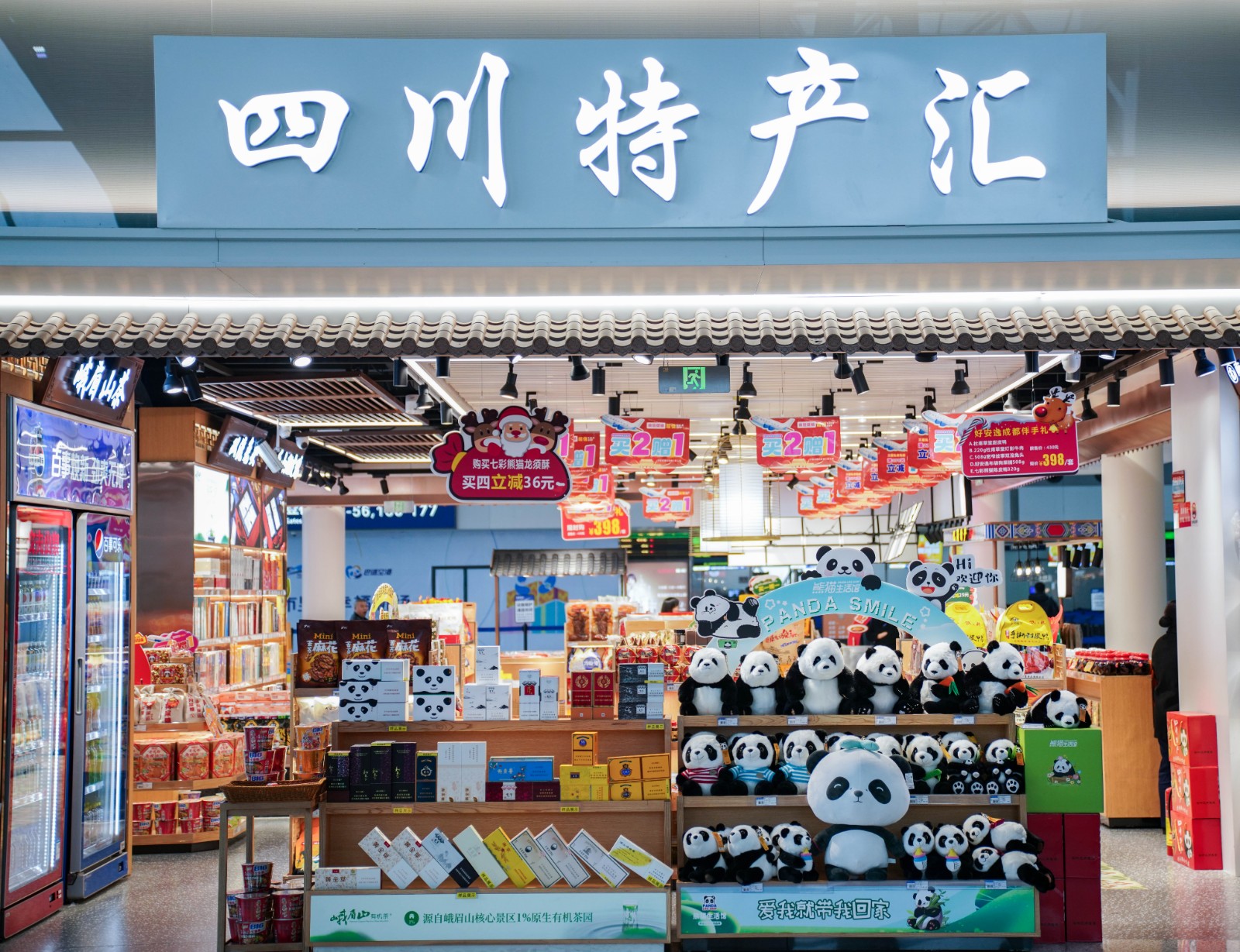
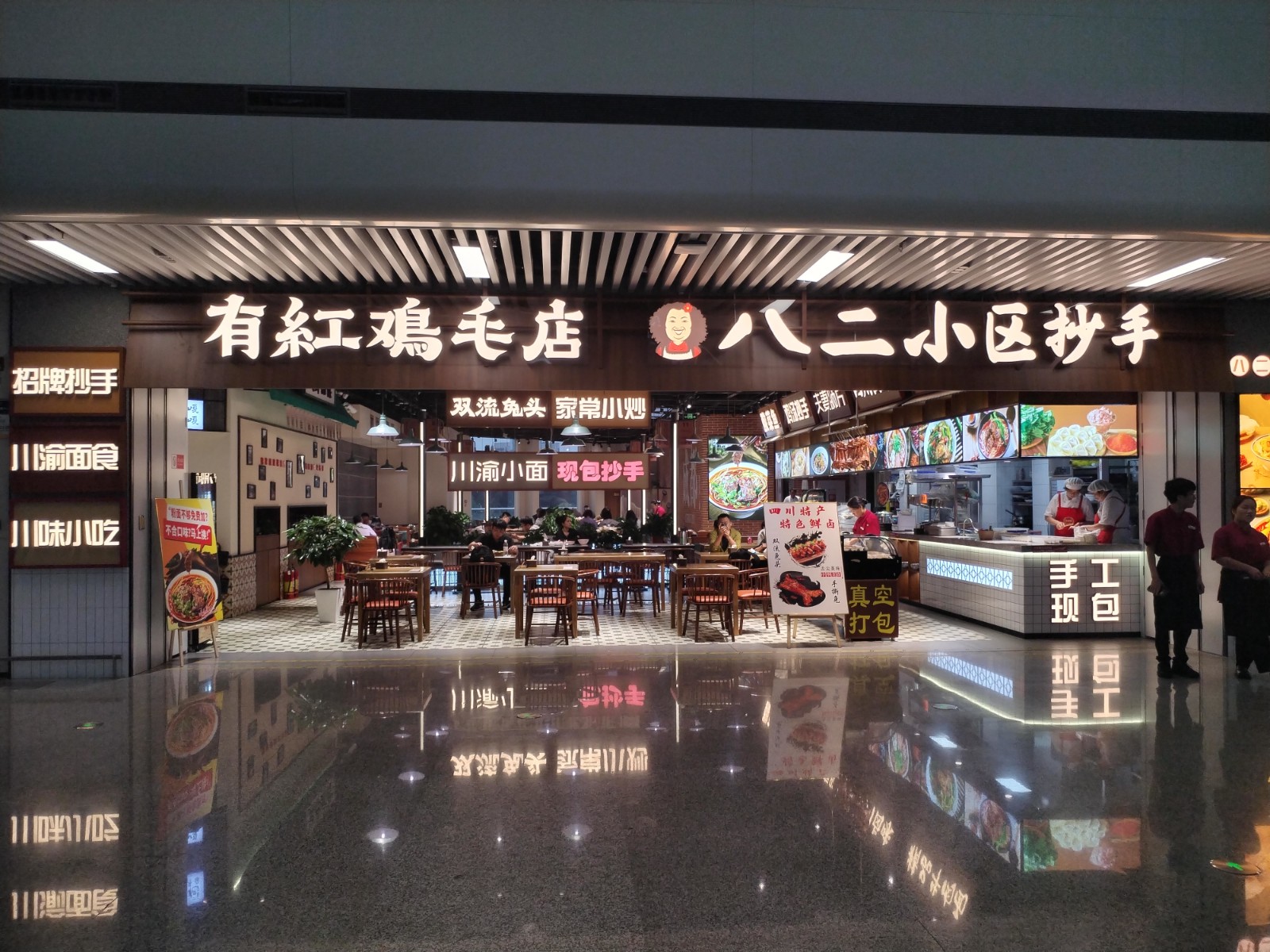
3. Practical Services
· Baggage Support: 24/7 baggage storage counters in T1 and T2 (near arrivals) offer secure storage for short or long stays, with rates starting at CNY 10 per item. Lost and found offices are staffed round-the-clock, with multilingual support for reporting missing items.
· Information & Assistance: Help desks in T1’s main hall and T2’s central concourse are staffed by English-speaking personnel, ready to answer questions about transit, transportation, or local attractions.
· Wellness Amenities: T2 features a small medical clinic with basic first-aid services, plus water refill stations and clean restrooms with accessible stalls on every floor.
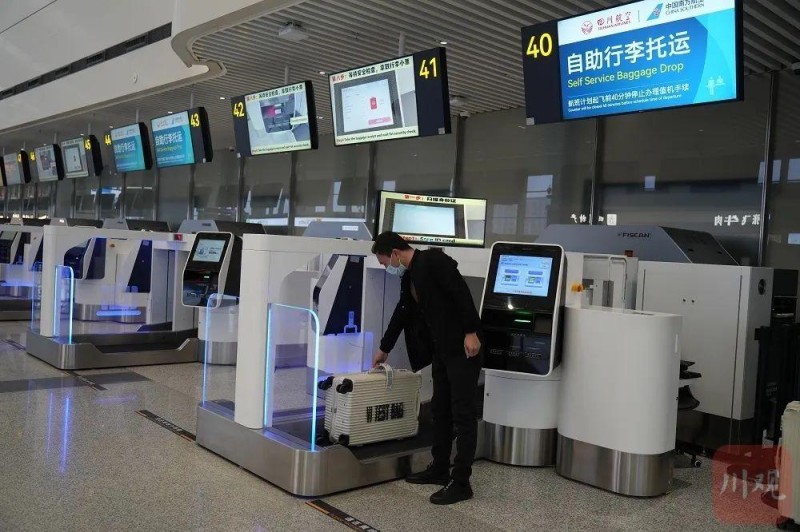
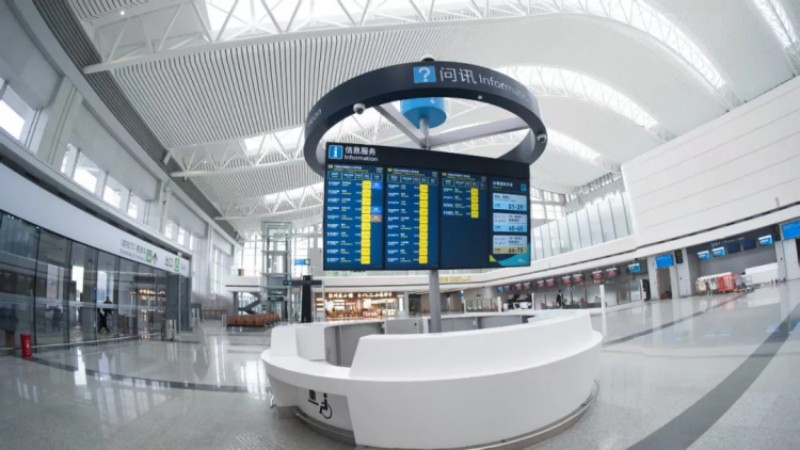
4. Special Needs Facilities
· Maternity Rooms: Spacious, private maternity rooms in T1 (near Gate 10) and T2 (near Gate 25) include nursing pods, baby changing tables, bottle warmers, and even small play areas for toddlers.
· Accessibility: Wheelchair ramps, elevators, and tactile paving cover all terminal areas, while low-height check-in counters and accessible restrooms ensure inclusivity. Wheelchair rentals are free (with valid ID) at information desks.
· Family-Friendly Spots: T2’s “Kids’ Corner” has colorful play structures and interactive games, giving little ones a chance to burn energy before flights.


B. Chengdu Tianfu International Airport (TFU): Modern Luxury with Smart Efficiency
TFU’s sprawling yet organized terminal complex (T1 for international/regional, T2 for domestic) redefines airport comfort with cutting-edge design and ample space. The two terminals are linked by a fast APM shuttle (2-minute ride) and covered walkways, with clear zoning for check-in, security, boarding, and amenities—so even first-time visitors won’t feel overwhelmed. The airport’s “smart” features (e.g., self-service check-in kiosks, facial recognition boarding, and digital facility maps via the official app) streamline processes, while its spacious layout and natural light create a calm, airy atmosphere.
1. Rest & Relaxation
· Premium Rest Options: Beyond standard seating, TFU offers paid sleep pods (CNY 60–120 per hour) in T2’s post-security area, memory foam mattresses, charging ports, and Wi-Fi—perfect for long layovers. The airport also features “observation decks” on T1’s 4th floor, with floor-to-ceiling windows offering views of takeoffs and landings, plus comfortable seating for casual relaxation.
· Luxury Lounges: International carriers (e.g., Turkish Airlines, Qatar Airways) and domestic airlines operate spacious lounges with buffet meals, shower facilities, and private workstations. Sichuan Airlines’ “Tianfu Lounge” even includes a tea bar serving premium Sichuan tea.
· Charging & Workspaces: Every seating area, lounge, and dining spot is equipped with fast-charging ports (USB-A/USB-C/Type-C) and high-speed Wi-Fi (free for all passengers). Dedicated co-working zones in T2 feature desks, task lighting, and printing services for business travelers.


2. Dining & Shopping: Global Flavors & Local Treasures
· Dining: T2’s “Gourmet Street” (post-security) offers everything from global chains (Starbucks, KFC) to high-end restaurants.
· Shopping: T1’s duty-free zone features luxury brands (Estée Lauder, Burberry) with tax-free prices, while T2’s “Ba Shu Gong Yi” (Sichuan Charm Collection) showcases local crafts—handmade Shu embroidery, bamboo carvings, and premium teas—ideal for souvenirs. Convenience stores and pharmacies (24-hour) stock travel essentials, while electronics shops offer last-minute gadget purchases or repairs.


3. Practical Services
· Baggage Support: Self-service baggage drop kiosks are available in both terminals, and 24-hour baggage storage (T1 arrivals, T2 GTC) offers secure storage with online booking options. Baggage wrapping services (CNY 20–50 per bag) protect luggage during transit.
· Information & Tech Support: Digital information kiosks (with English interfaces) provide flight updates, facility maps, and transportation guides. The airport’s official app (available in English) offers real-time navigation, lounge bookings, and food delivery to gates.
· Wellness & Convenience: TFU features 24-hour medical clinics with emergency services. Water refill stations, coat check services, and currency exchange counters are easily accessible.
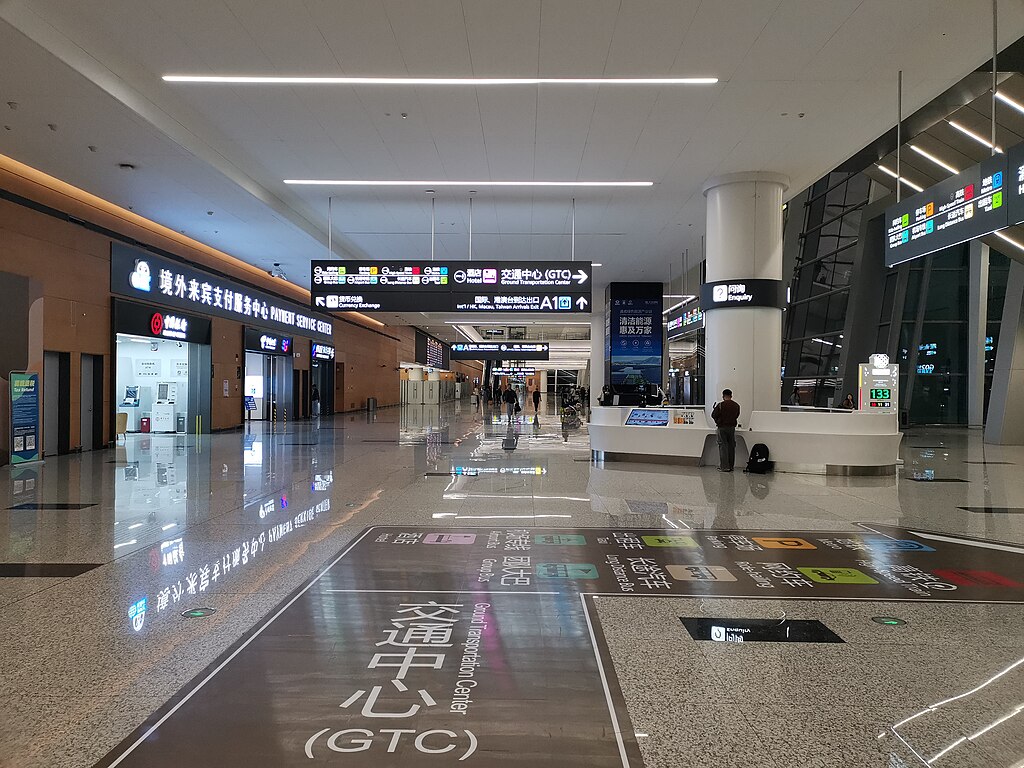
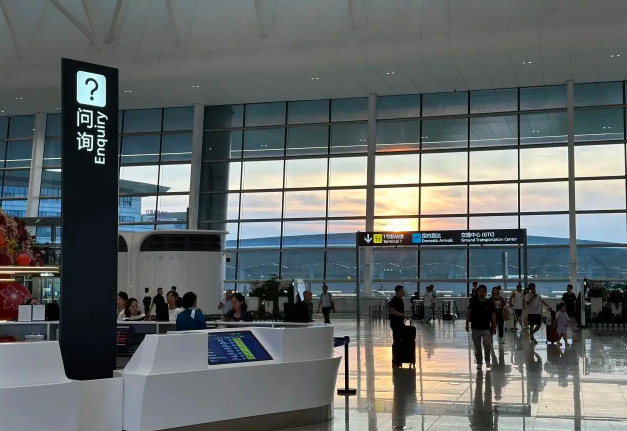
4. Special Needs Facilities
· Maternity & Family Services: Spacious, well-equipped ??? are located every 500 meters throughout both terminals, with private nursing rooms, baby changing tables, bottle warmers. T2’s “Panda Kids’ Zone” is a large, themed play area with slides, ball pits, and interactive exhibits—staffed by caregivers for added peace of mind.
· Accessibility: TFU is designed with inclusivity in mind: wide aisles, wheelchair-accessible restrooms, and low-height service counters. Electric wheelchairs are available for free at arrivals and information desks, and tactile paving guides visually impaired travelers to key areas. Call-for-help buttons are placed throughout the terminals for emergency assistance.


Transportation: Getting to/from & Between Airports
A. Chengdu Shuangliu Airport (CTU)
1. Metro Line 10
40-50 minutes to downtown (e.g., Chunxi Road), fare CNY 6; operates 6:00-23:12. Station entrances: T1 near domestic arrival exit, T2 adjacent to international arrival hall (follow "Line 10" signs). Peak-hour (7:30-9:30, 17:30-19:30) intervals 5-8 minutes, off-peak 10-12 minutes. Transfers to Line 1 (Taipingyuan Station) and Line 2 (Tianfu Square Station) for wider coverage. Ticketing: self-service machines (cash/mobile payment), Chengdu Metro Card, or Alipay/WeChat "Chengdu Metro" mini-program.
2. High-Speed Rail
10-20 minutes direct ride to Chengdu East Railway Station (fare CNY 8), 15-18 daily trips (7:47-21:31). Station located within airport complex, 5-minute walk from T2 via covered corridor. Tickets require passport for international travelers, available at counters, self-service machines, or 12306 app/website. Ideal for connecting to intercity/long-distance trains (Chongqing, Xi’an, Guiyang, etc.).
3. Taxis/Rideshares
30 minutes to downtown (CNY 60-100); dedicated pickup zones outside T2 (international arrival) and T1 (domestic arrival). Meters mandatory, extra CNY 1-2 per luggage piece, potential surcharges during peak traffic (7:00-9:00, 17:00-19:00). Rideshares (e.g., Didi) use designated "ride-hailing pick-up point" areas; confirm license plate before boarding, prepare Chinese destination notes for smooth communication.
B. Chengdu Tianfu Airport (TFU)
1. Metro Line 18
50 minutes to Chengdu South Railway Station (fare CNY 11), 5-minute intervals. Underground station accessible from T1/T2 via elevators/escalators (follow "Line 18" signs). Peak hours (7:00-10:00, 17:00-20:00) run every 5 minutes, off-peak 8-10 minutes; operates 6:00-23:30. Connects to Line 1, 5, 17 for transfers. Ticketing same as Metro Line 10.
2. High-Speed Rail
27 minutes to Chengdu East Railway Station (fare CNY 20), 10-minute intervals (8:00-21:30). Station integrated with airport transport hub, 10-minute walk from T2. Part of Chengdu-Chongqing High-Speed Railway network; passport required for ticket purchase/boarding (12306, self-service machines, counters).
3. Airport Buses
6 24/7 routes (e.g., Line 1 to Chunxi Road: 70 minutes, CNY 25; Line 3 to Panda Base: 90 minutes, CNY 20), fares CNY 15-25. Board at T1 Gate 5 and T2 Gate 8. Peak-hour (7:00-10:00, 17:00-20:00) departures every 15-20 minutes, off-peak/overnight every 30-60 minutes. Luggage racks available; tickets via driver or "Chengdu Airport Bus" app.
4. Taxis/Rideshares
60 minutes to downtown (CNY 200); pickup zones at T1 G02/T2 G04 gates. Meters in use, 20% surcharge for nighttime travel (23:00-6:00). Rideshare pickup near taxi zones; allow extra time during rush hours due to distance from city center.
C. Inter-Airport Connectivity
1. Metro Line 19
30-minute direct ride (6:00-23:30) between CTU and TFU, ideal for daytime transfers. Fare CNY 15, trains every 8-12 minutes. CTU station connects to T2; TFU station serves T1/T2. Transfer from Line 10 to Line 19 at Huanglongxi Station for CTU access.
2. Airport Shuttle Line 5
Overnight service (00:00-05:00) between airports, 80-minute ride (fare CNY 25). Departures every 30 minutes (00:00-02:00) and 60 minutes thereafter. Board at CTU T2 arrival hall and TFU T1/T2 arrival halls; no reservation needed, with luggage storage space.
Chengdu Awaits: Explore Its Most Iconic Sights with Our Expert Tours!
Experience Chengdu like never before!
Discover the magic of this fascinating city, from exploring ancient sites to enjoying the renowned Sichuan spice at local eateries. Our guided tours bring you closer to Chengdu's unique mix of tradition and modernity, offering unforgettable experiences at every turn. From tranquil tea houses to bustling street markets, let us help you uncover the best of Chengdu’s culture, cuisine, and hidden gems.
Flights & Airlines: Route Networks
A. Chengdu Shuangliu Airport (CTU)
1. Airlines
Air China (national carrier, key southwest hub), Sichuan Airlines (base airline, dominant in western China routes), Shenzhen Airlines (focus on Chengdu-South China connections), plus regional carriers like Chengdu Airlines. Sichuan Airlines leverages CTU for dense domestic coverage, while Air China links it to major national hubs.
2. Routes
34+ domestic routes covering core economic and tourist cities. Flagship "Rong-Hang Express" (Chengdu-Hangzhou) operates 10 daily round trips, with A320/A321 (high operational reliability, on-time rate over 90%) for 2.5-hour flights. "Chengdu-Shenzhen Express" runs 12 daily round trips, a key business corridor with frequent departures (every 60-90 minutes) from 6:30 to 21:00. Additional routes connect to Beijing, Shanghai, Guangzhou, Chongqing, Kunming, Xi’an, and regional hotspots like Jiuzhaigou, Daocheng Yading (Sichuan’s scenic destinations).
3. Focus
Serves as a domestic trunk route hub and southwest regional transfer center. Prioritizes high-frequency, short-to-medium-haul flights for business commuters and leisure travelers. Seamlessly connects to Sichuan’s domestic feeder routes, making it ideal for travelers heading to remote scenic areas in western China.
B. Chengdu Tianfu Airport (TFU)
1. Airlines
Air China and Sichuan Airlines (dual main bases), plus international carriers including Turkish Airlines, Qatar Airways, Emirates (Dubai), Singapore Airlines, ANA (Tokyo Haneda), Korean Air (Seoul Incheon), and Thai Airways (Bangkok). Domestic partners include China Eastern, China Southern, and Spring Airlines for expanded coverage.
2. Routes
87+ international/domestic routes, with 16 global hubs in its network. International routes span Europe (Paris Charles de Gaulle, London Heathrow, Milan Malpensa), Asia (Tokyo, Seoul, Singapore, Bangkok, Kuala Lumpur), and the Middle East (Doha, Dubai). Domestic routes cover all first-tier cities and key second-tier cities (Hefei, Guilin, Xiamen, Wuhan, Changsha, Qingdao), with dense frequencies to Beijing/Shanghai (20+ daily round trips each).
3. Highlights
Daily A350 long-haul flights to Milan (11-hour duration) and London (10.5-hour duration) – aircraft feature full-flight Wi-Fi, lie-flat business class seats, and enhanced economy class legroom. Domestic C909 (homegrown jet) flights serve 15 cities including Hefei, Guilin, Nanning, and Zhuhai, offering 20kg checked luggage allowance for economy class and spacious cabin layout. TFU is Chengdu’s primary international gateway, handling 80% of the city’s long-haul international flights.
Transit & Transfer Services
1. Same-Airport Transfers
· CTU (Shuangliu Airport): T1 and T2 are connected via covered pedestrian walkways (5-8 minute walk, marked with "Transfer" signs in Chinese/English) for seamless domestic-domestic or domestic-international transfers. Self-service bag drop kiosks are located near transfer walkways (T1 Departure Hall 2F, T2 Departure Hall 3F) – available for airlines including Air China, Sichuan Airlines, and Shenzhen Airlines, supporting passport/ID scanning for quick check-in. For short connections (=90 minutes domestic-domestic, =120 minutes domestic-international), staff at transfer desks (T1 near Gate 10, T2 near Gate 25) assist with itinerary verification and boarding pass reprinting.
· TFU (Tianfu Airport): Features the "Youyi Zhuan" (Premium Transfer) brand, tailored for domestic-international, international-domestic, and international-international transfers. Dedicated transfer lanes (T1 4F Transfer Area, T2 4F Transfer Hall) bypass regular queues, cutting processing time by 50%. Eligible travelers (holding connecting flights on partner airlines, transit <24 hours) enjoy 24-hour transit inspection exemption – no need to go through customs or immigration, with luggage temporarily stored in secure transit areas. Additional support includes multilingual staff (Chinese/English/Japanese/Korean) and transfer guides for first-time users.
2. Cross-Airport Transfers (CTU - TFU)
· Eligibility: Applies to travelers with connecting flights operated by partner airlines (Air China, Sichuan Airlines, China Eastern, etc.). Interval requirements: domestic-domestic transfers =4 hours (from arrival of first flight to departure of second), international-domestic transfers =5 hours (includes customs/immigration buffer). Total transit time must be <24 hours, with confirmed booking for both segments (same PNR code preferred for seamless service).
· Five Premium Transfer Services
(1) Priority check-in at dedicated counters: Open 2-4 hours before departure (TFU T2 E11 for Air China, G08 for Sichuan Airlines; CTU T2 B12 for joint-venture routes). Requires presentation of passport/ID and connecting flight itinerary – staff assist with boarding pass issuance and itinerary confirmation.
(2) Discounted meals/accommodation and shopping vouchers: Meal vouchers (CNY 30-50) valid at airport restaurants (e.g., TFU T2 Food Court, CTU T2 Café Lotus); accommodation discounts (15-25% off) at partner hotels near airports (shuttle included for overnight transit). Shopping vouchers (10% off) applicable to duty-free stores and brand outlets in both airports.
(3) Priority security screening: Dedicated lanes (TFU T2 Lanes 1-3, T1 Lane 6; CTU T2 Lane 8) with no queues – open 6:00-23:00, accessible with transfer boarding pass and service voucher (provided at check-in).
(4) Free in-terminal shuttle: Operates 7:00-22:00 in both airports, with stops at transfer desks, check-in areas, and security gates. On-demand service via transfer hotline (displayed at transfer counters) for elderly, disabled, or travelers with large luggage.
(5) Baggage through-check to final destination: Available for partner airline connections – declare at first check-in (original airport) to have luggage tagged directly to final city. No need to collect or recheck during cross-airport transfer; luggage transported via secure inter-airport logistics.
Nearby Hotels and Accommodation
A. Hotels Near Chengdu Shuangliu International Airport (CTU)
1. Joyhub Air Hotel
The Chengdu Airport Yunxiang Hotel is a core member of the hotel group at Chengdu Shuangliu Airport. The hotel has 10 floors, with an elegant exterior and traditional design influenced by the cultural heritage of the Ba-Shu region. The hotel features 296 guest rooms, each thoughtfully designed with a unique touch, blending the beauty of hotel culture with a high-end, sophisticated atmosphere. The rooms offer independent viewing platforms, allowing guests to enjoy a view of the aircraft taking off and landing, experiencing the cool and refreshing ambiance of the clouds.

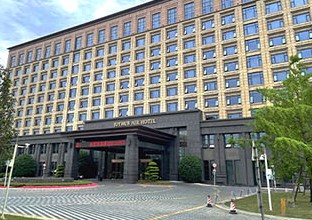
Address: NO.6 North 2nd Road, Shuangliu International Airport, Chengdu, Sichuan, China
Phone: +86-28-85208888
2. Holiday Inn Express Chengdu Shuangliu Airport by IHG
Holiday Inn Express Chengdu Shuangliu Airport located in Changle Section, Airport Road, Shuangliu District, Chengdu. The hotel is located near Chengdu Shuangliu International Airport, about 2km away from the airport, 9km away from Chengdu South Railway Station, and close to Shuangliu Airport Terminal 1 Station. With convenient transportation, you can choose from various modes of transportation and make it easy for you to travel. The surrounding facilities are well-equipped, include Yunjin Tiandi, Wanda Plaza, Outlet and other commercial centers which can meet all your needs during your stay.


Address: Building 1, No. 17, Changle Section, Airport Road, Shuangliu District, Chengdu, Sichuan, China
Phone: +86-28-81181888
B. Hotels Near Chengdu Tianfu International Airport (TFU)
1. Joyhub Cheer Hotel
The Joyhub Cheer Hotel is an ideal spot for travelers wanting to discover the city. Visitors to Jianyang will find that the Joyhub Cheer Hotel is a fantastic accommodation choice. With Chengdu Tianfu International Airport just 400m away and Tianfu Airport Railway Station only 400m away, transportation is very convenient. The closest major public transportation, Terminal 1&2 Of Tianfu International Airport Metro Station, is only 800m away. The nearby area boasts an abundance of attractions including Children's Activity Area (Chengdu Tianfu International Airport Store), Jierui Constant Temperature Swimming Club (Tianfu Airport Branch) and Zhongxing Aviation Research and Study Center (Tianfu Airport Branch).


Address: No.2 Yunyue Road, Jianyang, Chengdu, Sichuan, China
Phone: +86-28-86907777
2. Tianfu · Locke Platinum Hotel (Chengdu Tianfu International Airport Store)
Hongtu hotel is located next to Tianfu airport in the eastern New Area of Jianyang, with superior geographical location, avant-garde and rational design, dark and generous decoration, prominent and comfortable personality, beautiful surrounding environment, fresh air, and the ability to see the aircraft take-off at any time. The hotel is equipped with a Chinese restaurant, laundry room, coffee bar, multi-functional conference hall, free parking space, and 24-hour pick-up and drop off aircraft.


Address: No.51 Group 16 Xingfu Village, Jianyang, Chengdu, Sichuan, China
Phone: +86-28-81333999 | +86-18116594039
Unveil Chengdu’s Hidden Treasures: Curated Tours for Every Traveler!
Step into the heart of Chengdu!
Embark on a journey through this lively city, from the majestic pandas to serene Buddhist temples, and vibrant local markets brimming with authentic flavors. Our handpicked tours offer a personalized experience, letting you dive deep into Chengdu’s rich culture, history, and culinary delights. Whether you're a history buff, a foodie, or a nature lover, we've got the perfect itinerary tailored just for you.
Navigating Chengdu Airport: A Step-by-Step Guide
A. Before You Arrive
1. Documents and Visa Requirements for International Visitors
Before you head to Chengdu, make sure you have all the necessary travel documents:
· Passport: Ensure that your passport is valid for at least six months beyond your planned stay in China.
· Visa: Most international travelers will require a visa to enter China. You can apply for a tourist (L) visa, which is the most common type for visitors. Be sure to check the specific visa requirements for your country before traveling, as some nations may be eligible for visa-free entry for short stays.
· Arrival Registration: Upon arrival, you’ll be required to fill out an entry form. It’s a good idea to keep your visa approval documents and hotel information handy in case you need to show them during customs or immigration checks.
2. Currency Tips: Exchanging Money at the Airport and Nearby ATMs
· Currency: The official currency in China is the Renminbi (RMB), also known as Yuan (CNY). While international credit cards are widely accepted in larger cities, it’s always a good idea to carry some local currency for small purchases, taxis, or in places that don’t accept cards.
· Currency Exchange: Chengdu Airport offers several currency exchange counters located in both Terminal 1 and Terminal 2. Rates here are generally decent, though you may find better rates in the city. Consider exchanging enough to cover your initial transportation and any immediate expenses upon arrival.
· ATMs: There are multiple ATMs at Chengdu Airport that accept international cards (Visa, MasterCard, etc.). These machines allow you to withdraw RMB directly, but check with your bank beforehand regarding any international withdrawal fees.
3. Packing Tips (Sichuan Weather, Local Products You Can Bring into China)
· Weather: Chengdu has a mild climate, but it can be quite humid, especially during the summer months. Be sure to pack light, breathable clothing, but bring a jacket for cooler months (fall and winter). Rain is frequent in the summer, so consider packing an umbrella.
· Local Products: When packing, remember that China has strict rules about what can and cannot be brought into the country. Avoid packing fresh food items or items that are prohibited. Some products, like certain types of medicines or food (such as dried meats), may require documentation or could be restricted. Always check the latest regulations on customs restrictions before your trip.
B. Arrival Procedures
1. Passport Control, Customs Procedures, and Luggage Claim
· Passport Control: Once you land, follow signs to passport control. If you're arriving from an international flight, you will need to present your passport, visa, and any required documents to the immigration officer. The line for foreign passport holders may be longer than for Chinese citizens, so be prepared for a wait.
· Customs Procedures: After clearing passport control, you'll need to pass through customs. If you are carrying restricted items (such as large amounts of cash or certain products), declare them at the customs counter. Keep in mind that China has strict regulations on goods being brought into the country.
· Luggage Claim: Proceed to the baggage claim area to collect your checked luggage. Screens will display the carousel number for your flight. In case of any luggage issues (lost or delayed bags), visit the baggage claim service counter immediately.
2. Finding Your Way from the Arrival Hall to Transport Services
· Taxis: Taxis are located outside the arrival hall. They are a convenient option, especially if you have luggage or want to go directly to your hotel. Look for the official taxi queue to avoid scammers.
· Shuttle Buses: Airport shuttles provide services to key destinations in the city. Check the schedule and stops for these buses at the information counters or online before your arrival.
· Chengdu Metro: The Metro Line 10 connects the airport to downtown Chengdu. The metro station is located in the airport, and it is a cost-effective option for those heading into the city center.
3. Immigration Tips for Foreign Travelers
· Filling Out Forms: After clearing passport control, you’ll be given an entry form that you must fill out (usually for your visa). Be sure to complete it correctly to avoid delays.
· Language Barrier: While many signs at Chengdu Airport are in both English and Chinese, not all staff members may speak English fluently. It’s helpful to have your destination address written in Chinese, especially if you’re taking a taxi or shuttle.
· Tourist Assistance: If you need help or have questions, head to the airport’s information counters located in the arrival halls of both terminals. Staff here can assist with directions, transportation, and more.
C. Departure Procedures
1. Check-In Tips and Recommended Arrival Time at the Airport
· Check-In: Arriving early is always recommended, especially if you're traveling internationally. For domestic flights, aim to arrive at least 2 hours before your flight’s departure, and for international flights, 3 hours is a good guideline.
· Online Check-In: Many airlines offer online check-in services, which can save you time at the airport. You can print your boarding pass or download it to your mobile device.
· Luggage and Security: Ensure your luggage meets the airline’s requirements for both weight and size. For international flights, make sure you’re aware of restricted items and ensure any liquids or sharp objects are in compliance with airport security regulations.
2. Security and Boarding Procedures
· Security Check: After check-in, you will go through a security screening. You’ll need to place all carry-on items (electronics, bags, liquids) into bins for scanning. Ensure you’ve removed any items that could cause delays (such as electronics or metal objects).
· Boarding: Once you pass through security, head to the departure gate. Look for signs indicating your gate number, and be aware of boarding announcements. Make sure you arrive at your gate with enough time to board the flight comfortably.
Pro Tips for a Smooth Journey
1. Pre-Trip Prep
· Confirm Your Arrival Airport: Chengdu has two airports—Chengdu Shuangliu International Airport (CTU) and Chengdu Tianfu International Airport (TFU). Make sure to confirm which airport your flight will be arriving at when booking. The two airports are located about 70 km apart, so mixing them up can lead to confusion and delays.
· Arrive Early:
TFU (Tianfu Airport): For international flights into Tianfu Airport, it's recommended to arrive 3-4 hours before your departure to allow plenty of time for check-in, passport control, and security.
CTU (Shuangliu Airport): For domestic flights into Shuangliu Airport, aim to arrive 2-3 hours before your flight for a smooth experience.
2. On-Site Hack
· CTU (Shuangliu Airport): Use the high-speed rail to get from Shuangliu Airport to Chengdu East Railway Station quickly. This is a great option if you plan to continue your travels to Chongqing or Xi’an by train, as the rail connections are fast and efficient.
· TFU (Tianfu Airport): If you have a connecting flight between international and domestic airlines (e.g., Air China - Macau Airlines), book a cross-airline through-check in advance for a smoother transfer between the two flights at Tianfu Airport.
· Language: Both airports feature English signage and multilingual staff to assist international travelers. However, for added convenience, you might want to download the Pleco app on your phone for translation help, particularly if you need to communicate in Chinese at any point.
3. Customs
· Digital Customs Declaration: To speed up your entry into China, use the “China Customs” app to fill out your digital customs declaration forms ahead of time. This can significantly reduce your time spent in line at customs and streamline the arrival process.
· Time Management: International travelers should give themselves extra time for passport control, customs, and security procedures. During busy travel seasons such as Chinese New Year or public holidays, delays are common, so arriving earlier than usual is always a good idea to avoid stress and ensure a smooth travel experience.
· Luggage and Shopping: If you have excess baggage, check the available services at the airport for assistance with oversized or overweight luggage. Chengdu Airport also has plenty of shopping opportunities, from duty-free shops to local specialty stores. Take some time to browse and pick up souvenirs, local snacks, or gifts, especially if you have a bit of time before your flight.
Chengdu’s dual airports – CTU (convenient, domestic-focused) and TFU (modern, global-connected) – cater to every traveler’s needs. Whether you’re here for pandas, spicy hot pot, or business, Chengdu Airport China ensures a seamless gateway to Southwest China’s wonders. With efficient transport links, traveler-centric facilities, and innovative transit services, your journey through Airport Chengdu China will be as memorable as the city itself.
Your Way Holiday’s Exclusive Chengdu Guide & Unmatched Travel Experiences at Chengdu Airport China
We design private and tailor-made Chengdu tours customized to your travel style at affordable local prices. You’ll enjoy the comfort of a private, spacious car and the company of a professional local guide with over 5 years of experience, dedicated exclusively to you or your group. From transportation and tickets to authentic dining experiences (we always recommend the dishes most loved by locals), everything will be arranged according to your preferences. Please take a look at some of our most popular Chengdu tours below:
Not exactly what you’re looking for? Don’t worry — all of our Chengdu tours can be fully customized based on your interests, schedule, and budget. We specialize in creating unique Chengdu experiences that go beyond the guidebook, giving you the chance to truly connect with the local culture and people. Our enthusiastic tour experts are always ready to provide detailed suggestions and will respond to your inquiry within 24 hours. Ready to explore Chengdu your way? Contact us today and let us design a Chengdu shopping experience that fits your style. Your Way Holiday looks forward to your message! We're ready to design an unforgettable Chengdu trip for you anytime.
Wechat: Chinaprivatetour
24 Hours Hotline:
+8613735411378
1 to 1 tailor-made service from our professional travel advisors for the most sophisticated
Constantly excellent reviews for attraction, hotel and service Competitive price
Local experts provide quality tours Best selected knowledgeable local guides Authentic local restaurants
7*24 hours available to create you a worry-free tour. No Hidden Fees and absolutely no pressure to buy. Secured







